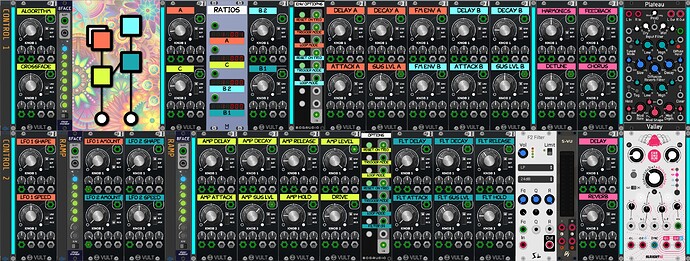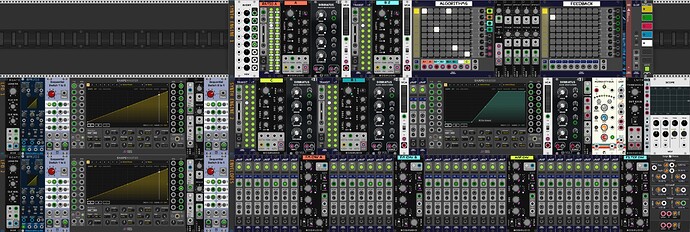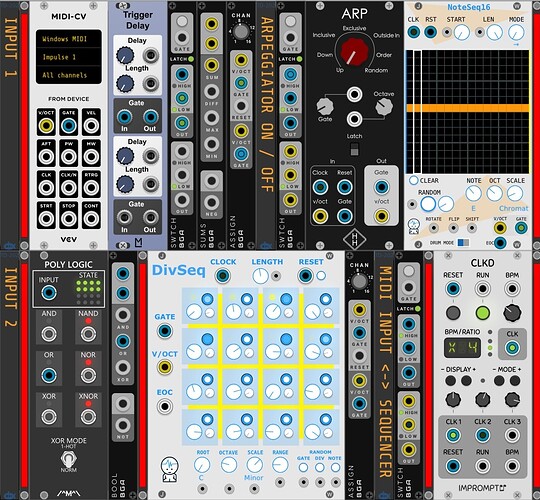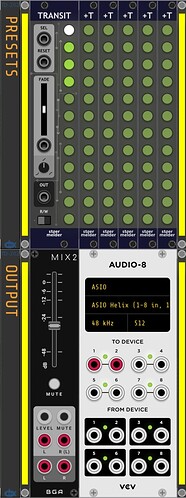Hi there,
after using VCV now for a while and finally joining this wonderful community a few weeks back, I thought it is time to start my own patch-collection in this thread.
I am using VCV mainly as a tool to get my brain resetted after a stressful day, sometimes the results are musical, more often not ![]()
I will start with a little patch I made today after watching Look Mum No Computers “Electro Magnetic Sonic Sequencer Thingy - Crystal Palace”
I tried to build something equally funky. So here we go:
LMNC - Crystal Palace.vcv (72.4 KB)
Please watch LMNCs video first, most of my description will be much more clearer then…
Sync LFOs is to be pressed once, it will reset both LFOs, so that they are rotating correctly. The VCAs are for converting the Saw-Wave of the LFOs to a more exponentially shaped CV-Curve, which will finally modulate the volume of the individual channels on the mixmaster. If you want to have more or less bleedover between the individual channels you can change the switch on the VCAs. SPEED is for … the Speed… PAN MOD changes the speed of the pan-modulation (done by BOG Walk). The Inputs are divided into even and odd and they are normalized downwards, so if you connect one sampler-loop to the top input of even and one to the top of odds, the “switching” will be constantly between both sources. You can adjust or mute individual “steps” with the mixing controls and finally add some overdrive and reverb. There is also a clock output, if you want to sync the rest of the patch or an input device to the speed of the LFOs.
Have fun!
- mo
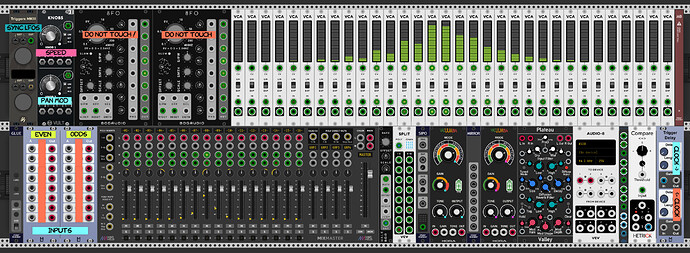
 The trick is to connect some constant signals to the inputs, like sampled atmospheric sounds, noise, constant pads, grainy stuff or single OSCs - three to five different sources connected to multiple inputs. Beats, Loops, Sequences are not really working, only if you are able to sync them to the speed of the LFO. It is more of an experimental thing, my results so far are not very musical yet
The trick is to connect some constant signals to the inputs, like sampled atmospheric sounds, noise, constant pads, grainy stuff or single OSCs - three to five different sources connected to multiple inputs. Beats, Loops, Sequences are not really working, only if you are able to sync them to the speed of the LFO. It is more of an experimental thing, my results so far are not very musical yet 

